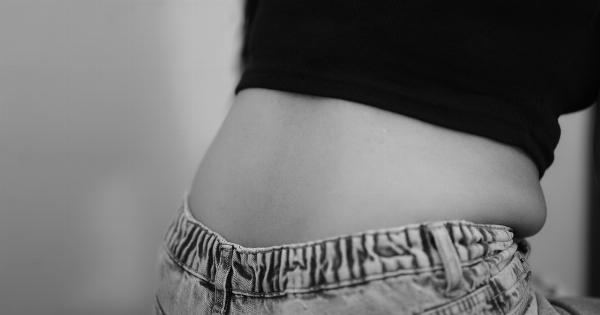Stress is an inevitable part of life, and it affects people in various ways. While most people associate stress with emotional or mental problems, it can also have physical consequences.
One such consequence is stress-induced bladder problems, which can significantly impact a person’s quality of life. In this article, we will explore what stress-induced bladder problems are, their symptoms, causes, and available treatment options.
What are Stress-Induced Bladder Problems?
Stress-induced bladder problems, also known as stress urinary incontinence (SUI), refer to the involuntary leakage of urine during activities that put pressure on the bladder, such as coughing, sneezing, laughing, or exercising.
It is more common in women than in men and can occur at any age, although it is more prevalent in older adults.
SUI occurs when the muscles and tissues supporting the bladder and urethra become weakened or damaged, causing them to lose their ability to adequately control the flow of urine.
This weakening of the pelvic floor muscles can happen due to a variety of factors, with stress being a significant contributor.
Symptoms of Stress-Induced Bladder Problems
The primary symptom of stress-induced bladder problems is the leakage of urine during activities that put pressure on the bladder. However, individuals may experience varying degrees of urinary incontinence, ranging from minor to severe.
Other common symptoms include:.
- Involuntary urine leakage during physical activities
- Leakage when coughing, sneezing, or laughing
- Frequent urge to urinate
- Waking up multiple times at night to urinate
- Feeling a sudden and strong urge to urinate and being unable to reach the toilet in time
- Feeling the need to urinate even when the bladder is not full
Causes of Stress-Induced Bladder Problems
There are several factors that can contribute to the development of stress-induced bladder problems. The most common causes include:.
- Pregnancy and childbirth: The physical stress placed on the pelvic floor muscles during pregnancy and childbirth can weaken them, leading to SUI.
- Menopause: Hormonal changes during menopause can cause a decline in muscle tone and elasticity, increasing the risk of bladder problems.
- Aging: As people age, the muscles and tissues responsible for bladder control may weaken, making them more susceptible to SUI.
- Obesity: Excess weight can put additional pressure on the bladder and pelvic floor muscles, leading to urine leakage.
- Chronic coughing: Conditions such as asthma, chronic bronchitis, or smoking-related respiratory problems can contribute to SUI due to constant pressure on the pelvic area.
Treatment Options for Stress-Induced Bladder Problems
The treatment plan for stress-induced bladder problems depends on the severity of the condition and its impact on an individual’s daily life. Some common treatment options include:.
Lifestyle Changes
For individuals with mild SUI, making certain lifestyle modifications can significantly improve their symptoms. These changes may include:.
- Weight management: Losing excess weight can reduce the pressure on the bladder, decreasing the frequency of urine leakage.
- Bladder training: Practicing techniques such as scheduled bathroom visits and delaying urination when the urge arises can help increase bladder control.
- Dietary adjustments: Avoiding bladder irritants such as caffeine, alcohol, and spicy foods can help alleviate symptoms.
- Fluid management: Regulating fluid intake and avoiding excessive consumption can help control bladder activity.
Pelvic Floor Exercises
One of the most effective non-invasive treatment options for stress-induced bladder problems is pelvic floor exercises, also known as Kegel exercises. These exercises aim to strengthen the pelvic floor muscles and improve bladder control.
They involve engaging and relaxing the muscles used to stop the flow of urine. Regularly practicing pelvic floor exercises can lead to noticeable improvements in bladder control and reduce urine leakage.
Medications
In some cases, medications may be prescribed to help manage stress-induced bladder problems. These medications work by relaxing the bladder muscles, reducing urinary urgency and leakage.
However, it is important to note that medications only provide temporary relief and do not address the underlying cause of the condition.
Surgical Interventions
For severe cases of stress-induced bladder problems that do not respond to lifestyle changes or other treatments, surgical intervention may be recommended.
Surgical options aim to provide support to the bladder and urethra, restoring their ability to control urine flow. Some common surgical procedures include sling procedures, bladder neck suspension, and artificial urinary sphincter implantation.
Living with Stress-Induced Bladder Problems
Dealing with stress-induced bladder problems can be challenging, but there are strategies individuals can employ to manage and cope with their condition:.
- Wear protective pads or undergarments to prevent embarrassment and minimize the impact of urine leakage.
- Practice good hygiene to prevent infections and skin irritation.
- Seek support from friends, family, or support groups to help cope with the emotional aspects of living with stress-induced bladder problems.
- Consult with a healthcare professional to develop a personalized treatment plan and explore available options.
Conclusion
Stress-induced bladder problems, or stress urinary incontinence, can significantly affect a person’s quality of life. It is important to recognize the symptoms and seek appropriate treatment to effectively manage the condition.
From lifestyle modifications and pelvic floor exercises to medications and surgical interventions, various options are available to help individuals regain control over their bladder function. By understanding the causes and treatment options, individuals can take proactive steps towards improving their bladder health and overall well-being.






























